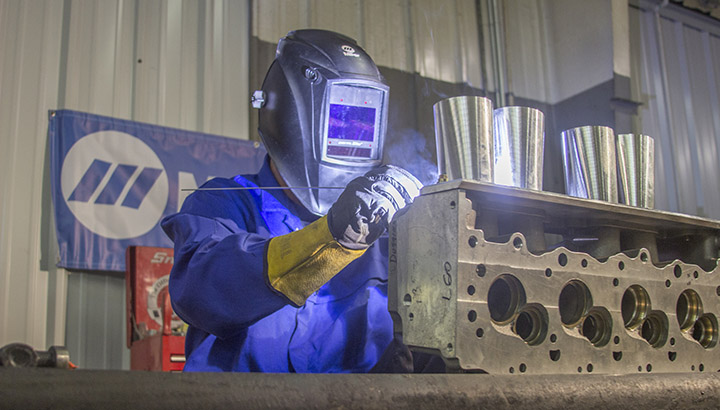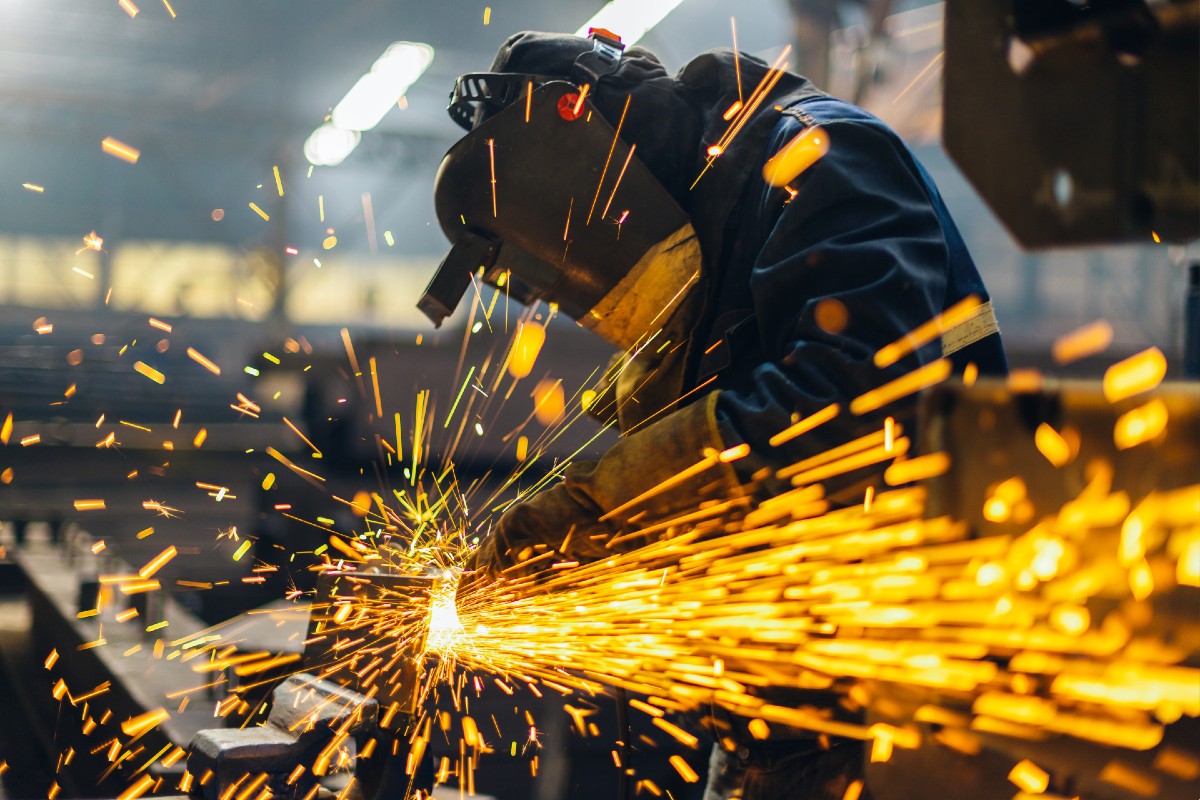Breaking down cracking in welds and how Montana Mobile Welding and Repair Belgrade Welding solves it
Common Welding Repair Service Issues and Just How to Address Them Properly
Welding repair work usually come across a series of concerns that can endanger the stability of the end product. Typical problems include inadequate infiltration, porosity, and imbalance, amongst others. Each defect presents distinct challenges that call for particular approaches for resolution. Understanding these issues is important for welders aiming to enhance their end results and skills. This conversation will check out these common welding repair work problems and effective methods to resolve them.
Inadequate Infiltration
Inadequate infiltration takes place when the weld metal stops working to completely fuse with the base material, causing weak joints and possible structural failings. This concern frequently stems from insufficient heat input, wrong electrode angle, or improper welding rate. Welders might encounter insufficient infiltration as a result of a mistake of the required specifications for a particular product thickness or type. In addition, contamination on the base product's surface area can impede effective bonding, exacerbating the trouble. To deal with poor penetration, welders ought to ensure ideal setups on their devices and preserve a clean job surface area. Regular evaluation of welds is advised to recognize any kind of deficiencies early, enabling for timely adjustments and the avoidance of compromised structural stability in bonded settings up.
Porosity
Porosity is an usual problem in bonded joints that materializes as small gas bubbles trapped within the weld metal. This problem can jeopardize the honesty of the weld, causing minimized stamina and potential failure under stress. Welding. Porosity normally occurs from contamination, moisture, or inappropriate welding techniques, which permit gases to escape into the liquified weld pool. To deal with porosity, welders should ensure correct surface prep work, maintain a tidy working setting, and utilize appropriate welding parameters. Additionally, picking the ideal filler material and shielding gas can minimize gas entrapment. Normal assessment and testing of welds can aid determine porosity early, assuring prompt rehabilitative actions are taken, therefore preserving the quality and reliability of the welded structure
Imbalance
Imbalance in welding can develop from numerous factors, including improper setup and thermal growth. Understanding the origin is necessary for efficient resolution. Several correction techniques are readily available to straighten components and guarantee structural integrity.
Causes of Misalignment
Welding imbalance often stems from a selection of underlying issues that can compromise structural stability. One key reason is incorrect fit-up of parts prior to welding, which can lead to voids and unequal surfaces. Variations in thermal development throughout the welding process can also lead to distortion, especially if the products being joined have various coefficients of expansion. In addition, inadequate fixturing and securing may stop working to hold components safely in position, leading to motion during welding. Inadequately maintained tools, consisting of welding devices and tools, might present disparities in the weld grain, additional adding to misalignment. Finally, driver error, stemming from not enough training or experience, can likewise play a considerable role in producing misaligned welds.
Correction Methods Readily Available
Attending to misalignment effectively needs a mix of rehabilitative strategies tailored to the specific issues available. One common technique is making use of jigs or fixtures to hold components in the correct setting throughout welding, guaranteeing constant alignment. Additionally, preheating the products can help minimize distortion and boost fit-up. For significant imbalance, mechanical realignment strategies, such as utilizing hydraulic jacks or clamps, can be employed to correct the setting before welding. Post-weld warm treatment may additionally be needed to soothe stress and anxieties created by misalignment. Mindful assessment and modification throughout the configuration stage can stop misalignment problems from becoming substantial issues, promoting a smoother welding procedure and enhancing general structural stability.
Distortion
Distortion is a common difficulty in welding that can emerge from various factors, consisting of irregular home heating and air conditioning. Comprehending the causes of distortion is vital for implementing effective prevention methods. Resolving this concern not only enhances structural stability however additionally boosts the total quality of the weld.
Sources of Distortion
When subjected to the extreme warmth of welding, products commonly undertake modifications that can cause distortion. This phenomenon primarily develops from thermal development and tightening throughout the welding procedure. As the weld location warms up, the material expands; upon cooling, it gets, which can develop inner stresses. In addition, unequal home heating across a work surface can worsen these anxieties, resulting in warping or bending. The sort of product also plays a considerable duty; steels with varying thermal conductivity and coefficients of expansion may respond in different ways, bring about unpredictable distortions. Inadequate joint layout and poor fixturing can add to misalignment during welding, increasing the possibility of distortion. Understanding these reasons is important for effective welding fixing and avoidance techniques.
Prevention Techniques
Effective avoidance methods for distortion throughout welding focus on regulating warmth like it input and ensuring proper joint style. Keeping a consistent warm input aids to lessen thermal expansion and tightening, which can result in distortion. Making use of strategies such as pre-heating the work surface can also lower the temperature slope, advertising consistent home heating. Furthermore, selecting appropriate joint layouts, such as T-joints or lap joints, can boost security and lower anxiety concentrations. Applying proper fixturing to safeguard the workpieces in position even more aids in preserving positioning during the welding procedure. Lastly, staggered welding series can disperse heat a lot more equally, protecting against local distortion. By applying these approaches, welders can greatly reduce the chance of distortion and improve the general top quality of their welds.
Splitting
Fracturing is a typical concern encountered in welding repairs, usually resulting from different variables such as improper cooling rates, material choice, or poor joint prep work. The occurrence of cracks can substantially compromise the integrity of the weld, resulting in prospective failures during operation. To resolve this problem, welders need to initially evaluate the source, guaranteeing that materials work and properly picked for the details application. In addition, regulating the cooling rate throughout the welding process is essential; fast cooling can induce tension and result in fracturing. Correct joint style and prep work additionally add to decreasing the danger. Applying these strategies can improve weld quality and toughness, eventually lowering the possibility of fracturing in ended up weldments.

Insufficient Blend
A significant problem in welding fixings is incomplete blend, which occurs when the weld steel does not appropriately bond with the base product or previous weld passes - Belgrade Fabrication. This defect can lead to weak points in the joint, potentially compromising the integrity of the bonded structure. Factors adding to insufficient blend include insufficient warm input, inappropriate welding technique, and contamination of the surfaces being joined. To address this concern effectively, welders need to assure correct pre-weld cleaning and surface preparation, along with adjust their welding specifications to attain ample penetration and fusion. Routine evaluation during the welding procedure can additionally aid recognize incomplete fusion early, enabling prompt rehabilitative procedures to boost the total quality of the weld
Overheating
While welding repair services can improve architectural integrity, overheating provides a significant difficulty that can cause material deterioration. Extreme heat during welding can change the mechanical properties of metals, leading to reduced toughness, increased brittleness, and bending. This phenomenon is particularly important in high-stress applications where structural integrity is like this critical. Determining getting too hot can involve visual evaluations for staining or distortion, along with keeping an eye on temperature during the welding procedure. To alleviate the dangers connected with overheating, welders must use ideal techniques, such as managing heat input, readjusting travel rate, and utilizing suitable filler materials. In addition, carrying out pre- and post-weld warm treatments can help recover material homes and improve the total quality of the repair service, making sure long-lasting efficiency and safety.
Frequently Asked Concerns
What Are the Usual Indicators of a Welding Problem?

How Can I Examine My Welds for Top quality?
To test welds for quality, one can utilize visual examinations, ultrasonic screening, and radiographic approaches. Each strategy assures architectural stability, determines problems, and confirms adherence to defined criteria, inevitably improving the dependability of the welded joints.
What Security Precautions Should I Take While Welding?
When welding, one must prioritize safety by using appropriate individual safety devices, guaranteeing proper ventilation, safeguarding combustible products away, preserving a clean work area, and recognizing environments to avoid crashes and injuries.
Can I Fix a Weld Without Renovating the Entire Joint?
Fixing a weld without remodeling the entire joint is feasible, depending upon the damage (Fabrication). Strategies such as grinding, adding filler product, or using a welding procedure can effectively address specific flaws while maintaining the bordering structure
What Equipment Are Important for Effective Welding Services?
Important tools for effective welding repair services consist of a welding equipment, cord brush, mill, protective gear, clamps, and filler materials. Each tool plays an important duty in making certain quality and safety and security throughout the repair work process. Porosity normally arises from contamination, moisture, or inappropriate welding methods, which allow gases to leave right into the liquified weld pool. Poorly kept equipment, including welding equipments and tools, might present incongruities in the weld grain, further contributing to imbalance. When subjected to the intense warmth of welding, products often go through changes that can lead to distortion. his comment is here Splitting is a typical issue experienced in welding repair services, often resulting from various elements such as incorrect air conditioning rates, product selection, or insufficient joint prep work. A considerable concern in welding repair services is insufficient fusion, which occurs when the weld metal does not properly bond with the base product or previous weld passes.